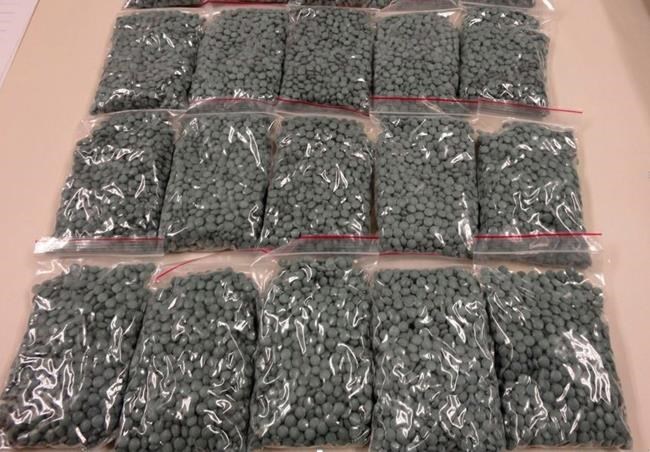More people died from illicit drug overdoses in British Columbia in the first eight months of this year than all of 2016.
The B.C. Coroners service says the 1,013 people who died from overdoses from January to the end of August surpasses a record 982 deaths last year.
In Victoria, there were 65 overdose deaths recorded in the first eight months of this year, compared with a total of 67 last year.
The province declared a state of emergency last year and took steps to try to reduce the number of overdoses.
Grant McKenzie, communications director for Our Place in Victoria, said the organization has doubled its temporary overdose-prevention unit to eight booths.
The unit provides a clean place for people to inject illegal drugs, with a paramedic, outreach worker and someone from the Society of Living Illicit Drug Users on hand. Now that there are eight booths, two paramedics are on hand.
“We’re seeing probably over 100 visits a day,” McKenzie said. “Since we’ve opened, we still see three to four overdoses a day, but we haven’t had a single fatality.”
The unit outside Our Place, which offers various services to Victoria’s vulnerable citizens, is a temporary measure until a federally approved supervised-consumption site sets up shop at 941 Pandora Ave. next year.
The province’s latest figures for 2017 show fentanyl was detected either alone or with another drug in more than 80 per cent of the deaths. In 2012, fentanyl was detected in just four per cent of overdose deaths.
Chief coroner Lisa Lapointe said the increase in deaths highlights the complex issues of drug dependency.
“It’s heartbreaking to see the continued high numbers of deaths throughout the province despite numerous initiatives and harm-reduction measures in place,” Lapointe said in a statement. “We also need people to know that no illicit substance in this province can be considered safe, whether you know your dealer or not.”
She said anyone using illicit drugs needs to be prepared for an overdose and have someone with them who is willing to help.
As part of the state of emergency, B.C. launched a take-home naloxone program, providing training in overdose prevention to those who were susceptible. The overdose-reversing drug was also made available at pharmacies around the province.
The statistics show 91 per cent of those who have died this year were between the ages of 19 and 59. Four out of five were men.
The coroner’s service says there were no deaths at supervised consumption or drug-overdose prevention sites.
The figures say most of those who died, about 89 per cent, were inside a private home or other indoor location, while 11 per cent of the deaths occurred in vehicles or outside.
The statistics show that fentanyl, a powerful pain killer, appears to account for the increase in overdose deaths since 2012 because the deaths where the drug is not involved have remained stable at about 300 per year.
— With a file from Cindy E. Harnett



